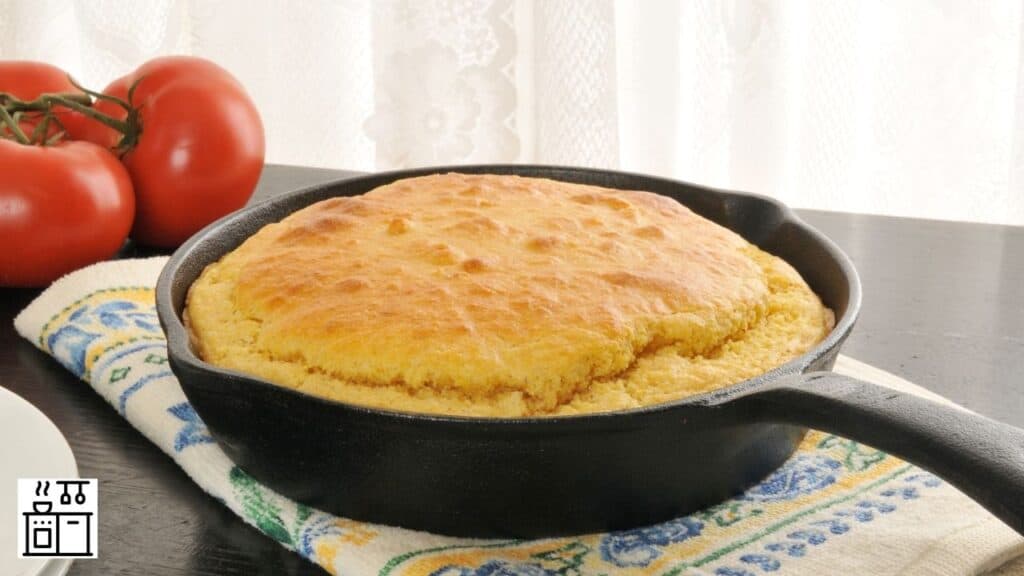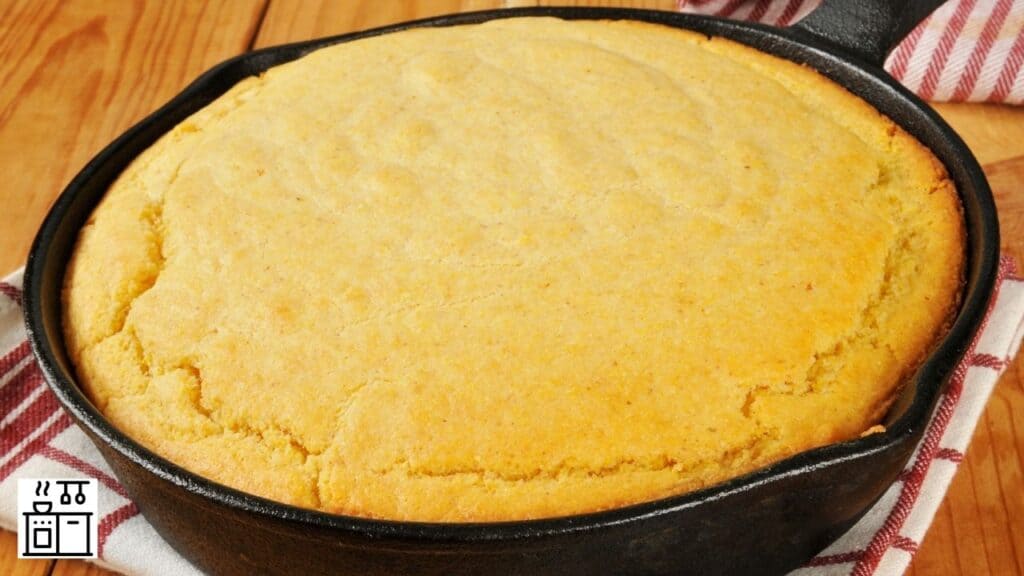Cornbread is a definite win if you are looking for good, Southern food. With its strong ancestry in Native American history, cornbread has been around for a while. The ingredients may have changed slightly, and the cooking methods may have been adapted somewhat. However, cornbread is still a staple for many Americans. If you plan to bake your own, you may be wondering: does cornbread rise?
Cornbread rises in the baking process. Most recipes include baking powder and baking soda, which add to the rising process. Bubbles are created while making the batter, which also leads to the rising. Avoid adding too much leavening as it makes the bread rise too quickly and then fall in the center.
Cornbread rises while baking, but it can grow too much or not enough. Let’s now see what makes cornbread rise, how much it rises, and how to avoid it from sinking in the center.
Why Does Cornbread Rise?
Cornbread rises when baked.
Cornbread recipes typically contain the leavening agents of baking powder and baking soda.
Another popular leavening agent you will find in a recipe is yeast.
However, yeast isn’t usually used when making cornbread.
While making the batter for cornbread, bubbles are created.
It’s this aerated effect that helps the bread to rise.
Leavening agents help baked goods rise through pockets of air that form in the batter.
They form a gas, typically carbon dioxide or hydrogen.
The air pockets help the loaf rise and become light and fluffy.
Since cornbread recipes usually include baking soda and baking powder, air pockets are typical in cornbread batter.
These pockets of air help the cornbread to rise slightly while baking.
Including too much leavening agents will cause the bread to grow too quickly.
This will result in your cornbread creating a cone shape in the center while baking and then having that cone sink when it’s baked.
To ensure a perfectly risen cornbread, measure your baking soda and baking powder concisely because using too much could make your cornbread flop.
Recommended: Cornbread Have Corn In It? | Can Sweet Potatoes Be Peeled Ahead Of Time? | Are Tomatoes Citrus? | Does Cornbread Mix Go Bad?
How High Does Cornbread Rise?
Since cornbread rises, the next question is: “How high?”
It’s important to note that cornbread doesn’t double in size or rise, so your pan will be insufficient to hold it.
Loaves of regular bread will rise to around 30% of their original size while baking, but this is not the case with cornbread.
Cornbread will rise slightly as it becomes solid during the baking process.
The batter’s leavening agents of baking soda and the baking powder will also help the cornbread rise slightly.
The bubbles created in the mixture give the bread a light and fluffy texture.
The bubbles in the baked bread help the cornbread expand since they take up space.
When baking regular bread, it’s helpful to watch how much it has risen to know if it’s done.
Baking cornbread is a little different from that.
You will know that your cornbread is done, not by how high it has risen, but by the golden color visible on top.
When checking on your baked cornbread, insert a toothpick in the center to ensure it’s baked all the way through.
Can Cornbread Rise Too Much?

Cornbread can rise too much. If this happens, the center will fall.
The reason for this is a little scientific, so bear with us.
Cornbread batter contains leavening agents.
We typically use baking powder and baking soda for cornbread.
The purpose of leavening is to create air pockets in the batter.
The air pockets release gasses, usually carbon dioxide and hydrogen.
These air pockets are what help the bread to rise.
When we add too much leavening, the bread rises too much, too quickly.
This happens when gas from the leavening agents becomes too much and escapes through the top of the loaf before it’s cooked through.
The result is a loaf with a center that rises quickly while baking and then sinks for the final product.
More science comes in with the capacity of the batter.
When we use too much leavening, the quick, substantial rise of the bread becomes too much for the batter to withstand.
Since it can’t contain the gas, it escapes.
Now that you know what causes cornbread to rise too much and what happens when it does, it’s time to look at ways to prevent it.
Let’s look at how to make your cornbread rise ideally.
Related: Can Oil Be Left In Your Deep Fryer? | Which Knives Do Professional Chefs Use? | Do Cheese Sticks Go Bad?
How To Make Your Cornbread Rise Perfectly?
Although cornbread doesn’t rise a considerable amount, you need a good amount of rising.
Too little, and your bread will be dense and challenging to eat.
Too much, and it will end up sinking in the center.
It’s a good idea to follow the recipe you are using closely.
However, we have four main tips to ensure your cornbread rises the perfect amount.
- Be concise when measuring your leavening agents. Leavening agents work hard, so you don’t need to add more than the amount in the recipe. To avoid having your cornbread rise too much, concisely measure your baking soda and baking powder. Also, level off the baking powder and baking soda from your spoon before adding it to the batter mix.
- Move a little batter to the edges of the pan. The center of your cornbread may rise a little more than the outer edges. To prevent this, use the back of a spoon to shift some of the batter away from the center and more toward the edges before baking. It will likely still be delicious if your cornbread is slightly higher in the center when fully baked.
- Don’t over-mix the batter. It can be tempting to mix until all the lumps are gone when mixing your ingredients. This, however, is a bad idea when making cornbread. With cornbread batter, the bumps can stay, and you should only fold the mixture until the ingredients are combined. Too much mixing can result in your bread being denser than you would probably like.
- Let the batter rest. Leavening agents need time to work their magic. Once you have combined your ingredients, let the batter rest for fifteen to twenty minutes. This will give the leavening agents time to create enough gas in the batter that your cornbread will rise ideally.
Like any recipe, adding a touch of love makes the dish perfect.
In the case of cornbread, the love we need to add seems to be careful concentration and consideration for how much of each ingredient we include.
We recommend taking it slow and enjoying every step of the process to get the best results.

